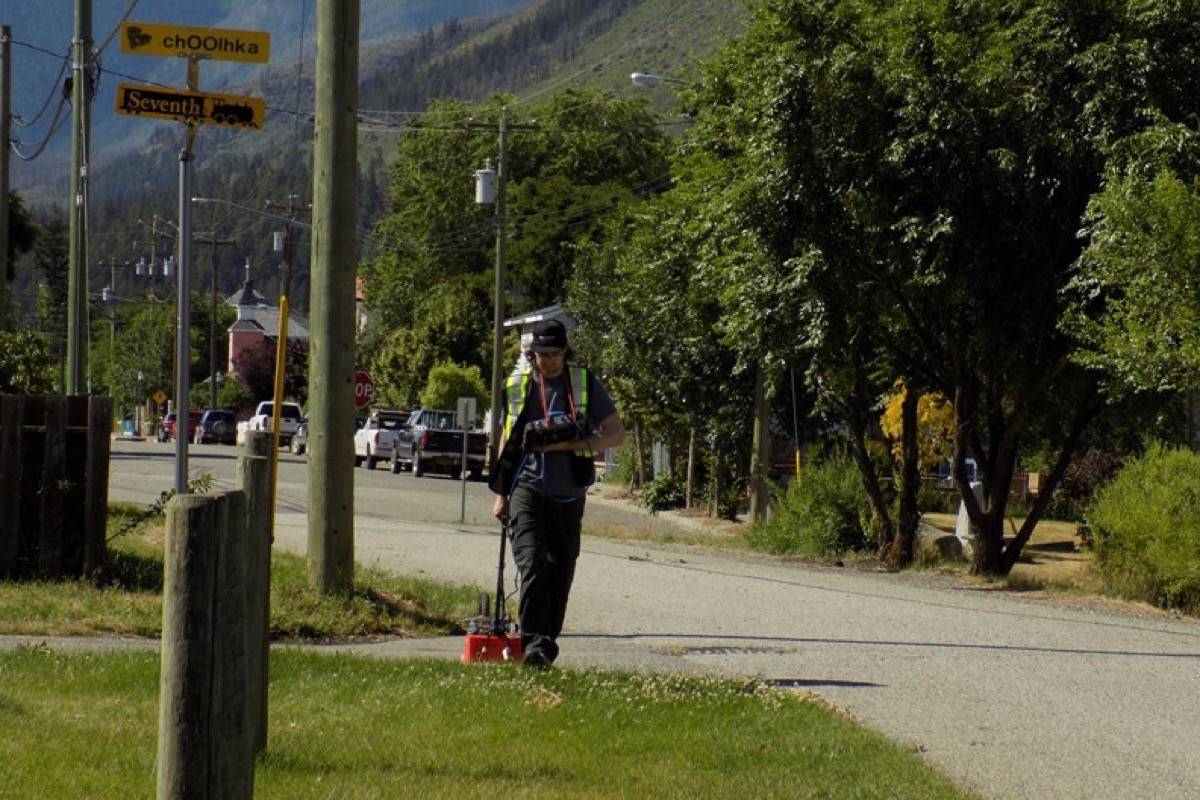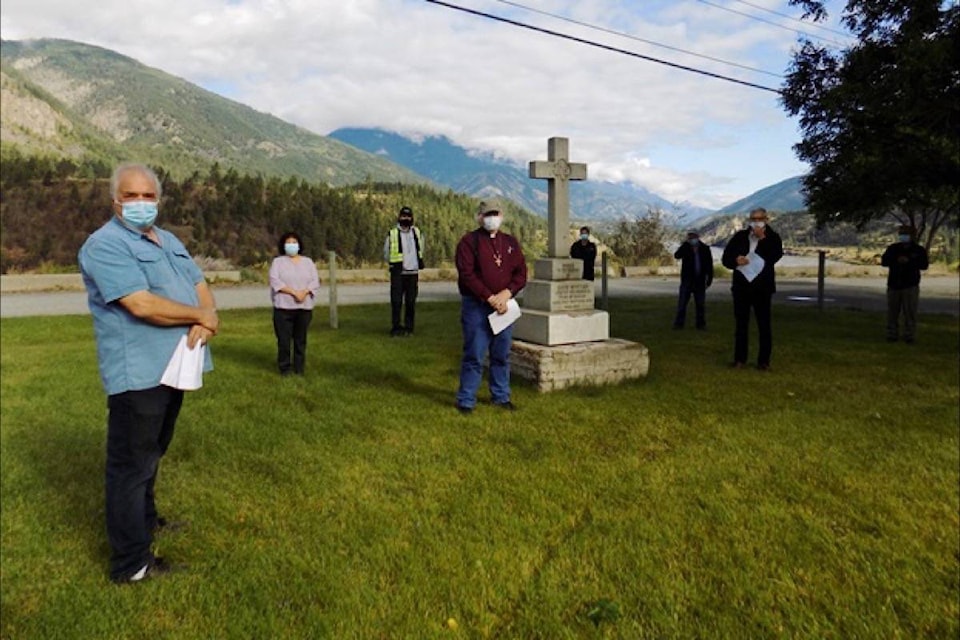An archaeological survey of a culturally significant First Nations site in Lytton has solved one longstanding mystery of history, but has led to more questions, which might never be answered.
Last month, the Chief Cexpe’nthlEm Memorial Precinct Revitalization Project task force hired GeoScan Subsurface Surveys of Vancouver to conduct an archaeological/geophysical investigation of the precinct grounds, near the Anglican Church complex of St. Barnabas in Lytton.
The site features a memorial to Chief Cexpe’nthlEm (known to non-Indigenous people as David Spintlum), a celebrated Indigenous leader and peace-maker who played a key role in ending the potentially catastrophic Canyon War in 1858.
The memorial was erected in 1887, when Cexpe’nthlEm died, but no one knew if he — or anyone else — was buried at the site, or what else might be hidden from view. GeoScan used ground penetrating radar and magnetic survey technology to determine if there were any human remains, artifacts, or structures at the site.
READ MORE: Modern technology hopes to solve 150-year-old mystery in Lytton
“The survey has concluded, the scanning is done, and we’ve got the report,” says Don Hauka, Communications/Creative Director for the New Pathways to Gold Society, one of the partners — along with Lytton First Nation, the Village of Lytton, and the Anglican Parish — in the memorial precinct revitalization project.
“We know there’s a burial there. We got [an image] showing the outline of what looks like a burial, and it’s big enough that there could be more than one person. They’re at the right depth, and the right size and shape.”
Hauka explains that they did not get a snapshot of what was there. Instead, the scan revealed an outline of the image and form in the landscape.
“It appears that there’s a burial near the actual memorial, but unless we dig and exhume we can’t tell who.” He adds that there is no sign of the outline of a coffin, indicating that the burial is probably not European.
“It looks like a traditional First Nations burial, not an Anglican one, and is probably an Nlaka’pamux person of some importance. In an Anglican or post-contact Christian burial we would see a coffin, and that’s what’s so intriguing about it.”
Hauka notes that traditional burials were held pre-contact, and continued into the post-contact era, meaning the remains could be those of Chief Cexpe’nthlEm.
“That’s what’s so intriguing. Is it Chief Cexpe’nthlEm, and if so, how would we find out? The only way is to excavate.”
DNA samples could possibly be utilized to determine whose remains are buried there. A direct descendant of Chief Cexpe’nthlEm, Cecil Salmon, lives in the Fraser Valley, and attended a 2018 ceremony in Lytton that commemorated the 150th anniversary of the Canyon War. “Chief Cexpe’nthlEm has living descendants, so it shouldn’t be too hard to figure out if it’s him if the remains were disinterred.”
However, that decision rests with Lytton First Nation, and Hauka says it is entirely up to them. “The sense is that they’re not really inclined to disturb things. It’s before council, so we’ll wait and see.”
He adds that plans for developing the precinct would be able to go ahead without endangering what was found there. “We could perhaps put up a marker saying that the unidentified remains of an Nlaka’pamux person were found here. We want to honour that, and we don’t want to disturb anything. Let’s commemorate a person we feel is a co-founder of modern B.C.”
He notes that over the decades there have been houses on the site, as well as utilities crisscrossing it. “It’s a fairly disturbed site in terms of what’s happened there, but there are some undisturbed spots. It looks as if there could be deposits of other items there. It’s a complex site, and if the burial is pre-contact then the items could range from who knows how far back to the present day.
“There’s a cross-section of B.C. history sitting there, and now we can move forward and build the precinct, articulate some of this history.”
The mystery of where Chief Cexpe’nthlEm is buried has persisted for almost 150 years. One article from the late nineteenth century claims that he was laid to rest in an Anglican parish not far from Lytton, while another says that he was buried near where the memorial now stands.
Hauka adds that Nlaka’pamux oral tradition has it that he was buried in a sacred site above Lytton, but he himself inclines toward the precinct near St. Barnabas.
“I don’t think you put a memorial somewhere for no reason. It might have been Chief Cexpe’nthlEm, who became an Anglican deacon before he died.
“He is a legendary figure. To reach out and determine if these particular remains are his is a thing that can be done, but it may be sufficient to have the spirit of Chief Cexpe’nthlEm and what he stands for live among us. That’s why we’re building the precinct.”
Hauka notes that the project has united First Nations and non-First Nations people, and Precinct task force member Jan Polderman, the Mayor of Lytton, agrees.
“We’re pleased to be working with Lytton First Nation to uncover more of their history,” he says. “We detected an archaeological site that has been covered, and remains that will be left where they are. What I’m pleased with is that B.C. is recognizing the important contribution Chief Cexpe’nthlEm made to B.C. and the area to keep and maintain a peaceful relationship.”
“We’re moving forward in that spirit of unity,” says Hauka. “We still don’t know for sure who’s buried there, and we may never know for sure. We haven’t solved the mystery, we’ve added to it. But one way or another we’ll honour this magnificent man, who was a hero.”
editorial@accjournal.ca
Like us on Facebook and follow us on Twitter

